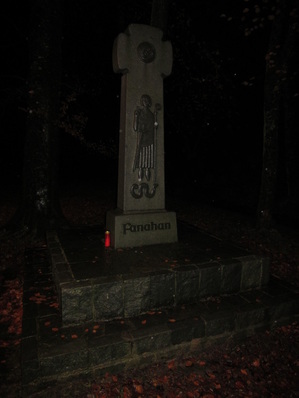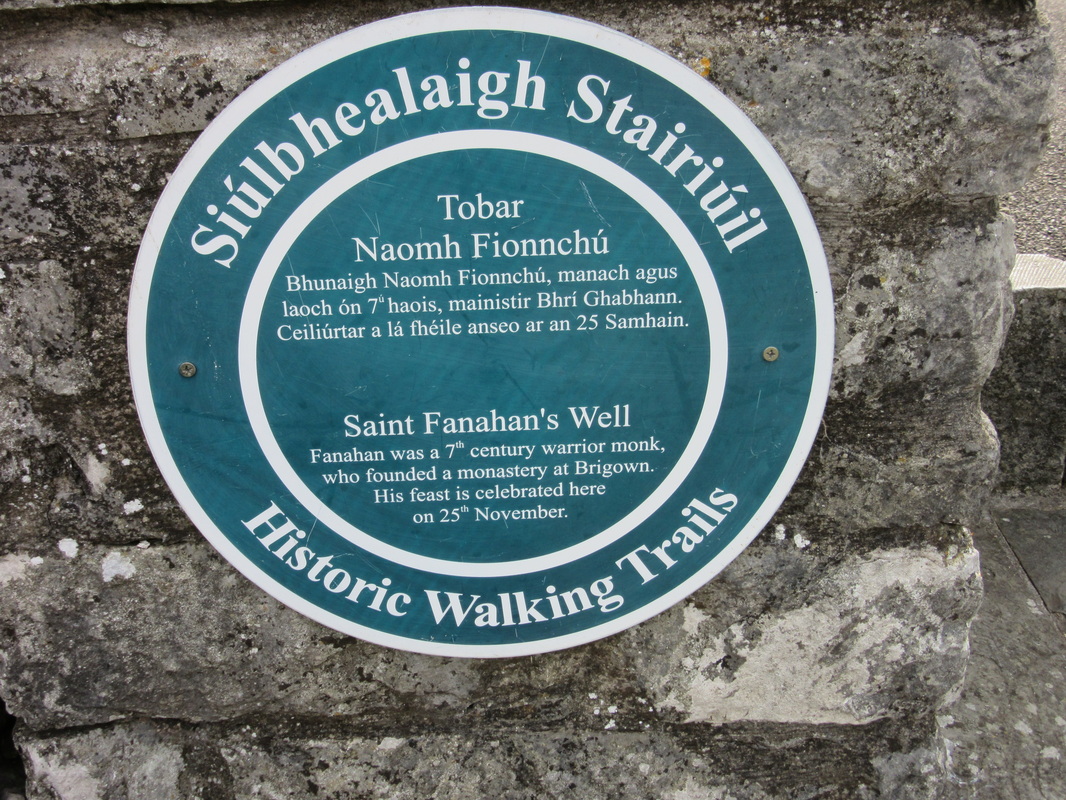 2014.11.21
2014.11.21 Last September, I was early for a meeting in Mitchelstown so stopped to walk to St. Fanahan’s Well. As you might have gathered from previous posts, Holy Wells intrigue me – the possible incorporation of Pagan rituals in Christian religious practices; the cures believed to be as a result of his intervention; and the continued observance of the tradition.
In September, it was a pleasant morning walk down the tree lined path and around the well.
Last Friday, driving back from Co. Kildare with a head cold after a long tiring day, made longer by road works diversions, I stopped again at St Fanahan’s Well – it being within seven days of the feast day. From the time I started walking down the path to my return, I passed about ten people – this being at about 6.00 p.m., dark and wet.
The straightness of the path, especially when lit, is a sight. The tall trees that surround the Well area gathered the soft rain into larger drops which fell from the trees to give the sound of heavier rain that actually fell.
I walked around the path clockwise as practised by those there before me, but the prayers and rosary are not of my religious persuasion so were not said.
The tall straight trees call out to be touched.
Before the M8 Mitchelstown by-pass, it must have offered an extremely peaceful and atmospheric chill-out time. The road traffic noise did impinge on my efforts to clear the head.
“Saint Fanahan’s Holy Well is at the end of this picturesque 700-metre long beech-lined footpath. The earthen bank on which the path was built may be over 1,000 years old. The path is terminated by a stone footbridge leading to a wooded ‘island’ surrounded by three streams. The meeting of these streams was interpreted by the Early Christians as an allusion to the Holy trinity. It is also possible that the Well was a Pagan religious site embraced by Christianity. “Saint Fanahan founded a monastic city at Brigown in the seventh century. Its name means ‘smiths’ hill’ in tribute to the seven smiths who made seven sickles whereon Fanahan performed acts of self-mortification so that he could ensure his place in heaven. His monastery probably consisted of one or more wooden churches, numerous small beehive huts in which the monks worked and lived, a scriptorium where manuscripts were copied, vegetable gardens, a burial ground and a dairy farm. It may also have had a large circular enclosure but traces of this have disappeared. A round tower was added, probably in the tenth century, but most of this fell in a storm around 1720 and the remainder was demolished in 1807.” | “Pilgrims who attend the annual ‘Pattern Day’ (Patron’s Day) at Saint Fanahan’s Well on 25th November are participating in a ritual that probably goes back to pre-Christian times when this well was a site of Pagan worship. It became part of Christian tradition after the arrival of Christianity into this area, probably in the fifth or sixth centuries. In those times and up to the present, many believed in the curative powers of the waters from the well, especially in curing lameness, warts, flesh wounds and blindness. The Pattern traditionally lasts for nine days before 25th November, when pilgrims are expected to visit and pray at the well each day or night. Prayers are said (privately) before the well itself where requests to the saint (for cures, help with personal problems etc.) are expected to be made before during and after walking three-times clockwise around the pathway behind the well, each time saying a decade of the rosary” “Saint Fanahan (‘Fair Hound’ or ‘Fair Warrior’) was a seventh century warrior monk credited with piety and heroism of biblical proportions. He joined the monastery in Bangor, County Down from where, after working seven years as abbot, he came south to found a monastery on land granted to him by the King of Munster. |




